
Research studies have shown that certain foods, herbs, spices, and teas lower blood pressure while others increase it. Accurate information about foods that lower blood pressure (BP) may thus help you set up an effective diet plan to manage your BP.
You need to control your blood pressure because high BP, also known as hypertension, is a major risk factor for cardiovascular disease and related complications, such as heart failure, vision impairment, stroke, and renal failure.
Contents
Lifestyle changes to lower blood pressure
21 foods that lower blood pressure
Leafy vegetables, roots and tubers
What is high blood pressure?
Hypertension is a global health problem affecting more than 1.2 billion men and women worldwide.
The official clinical guidelines for diagnosing and treating high blood pressure have evolved in recent years. In 2004, the Seventh Joint National Committee (JNC 7) guidelines established the upper boundaries of normal blood pressure in otherwise healthy individuals as less than 140 mmHg (systolic) and 90 mmHg (diastolic) (<140/90 mmHg). The committee recommended less than 130 mmHg (systolic) and 80 mmHg (diastolic) (<130/80 mmHg) in individuals with chronic illnesses, such as kidney disease and diabetes.
In 2014, JNC 8 recommended starting pharmacologic treatment in people less than 60 years old when systolic BP is 140 mmHg or higher or when diastolic BP is 90 mmHg or higher. JNC 8 recommended starting pharmacological treatment in people 60 years or older when systolic BP is 150 mmHg or higher or when diastolic BP is 90 mmHg or higher.
[Note: Systolic BP is the resistance of the wall of the blood vessels to blood flow during the contractile phase of the heartbeat (cardiac) cycle, while diastolic BP refers to the resistance to blood flow during the phase of the heartbeat (cardiac) cycle when the heart muscles relax to allow infilling of blood.]
The Systolic Blood Pressure Intervention Trial (SPRINT) study recommended intensive BP control to a systolic BP of <120 mmHg. SPRINT made the recommendation because systolic BP control to <120 mmHg resulted in a significant reduction in cardiovascular events and death in high-risk patients compared with the standard recommendation of <140 mmHg.
Lifestyle changes to lower blood pressure
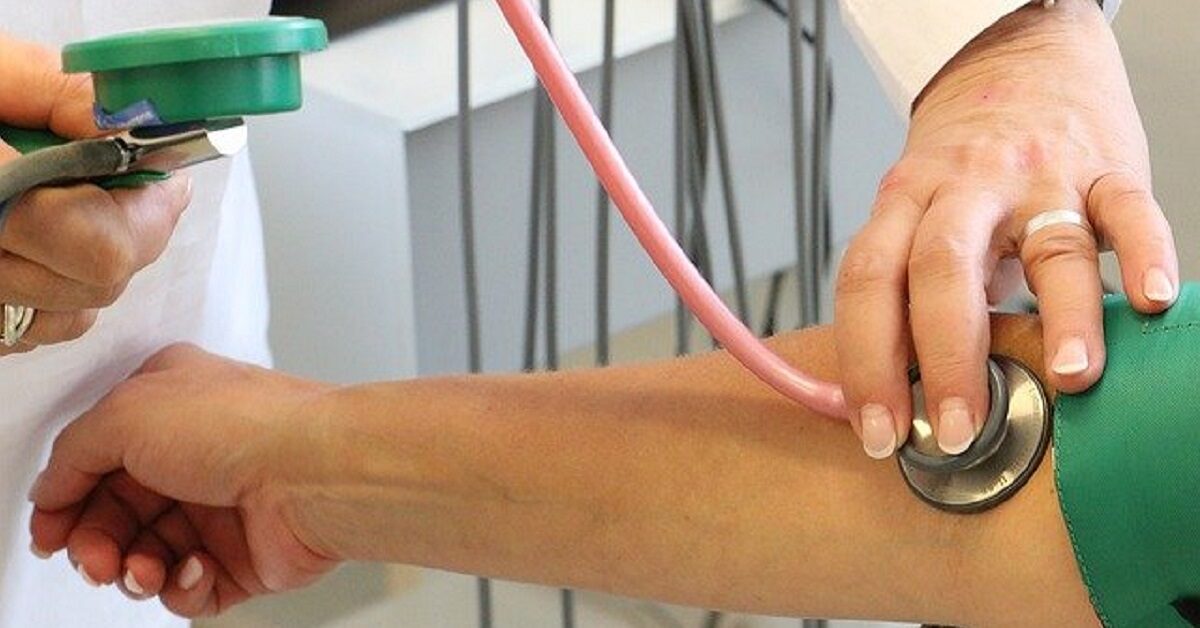
Doctors usually prescribe medication when they determine that a patient has high blood pressure. Commonly prescribed high blood pressure-lowering medications include ACE inhibitors, Angiotensin II receptor blockers, and calcium channel blockers.
In addition to medications, your doctor will also likely suggest lifestyle changes to manage high blood pressure. Depending on the determination of the cause of your high blood pressure and assessment of the degree of BP elevation, your doctor may recommend lifestyle changes either as an adjunct to drug therapy or alone.
Regardless of whether you are on blood pressure-lowering drugs or not, everyone watching their BP needs to adopt lifestyle changes that include a healthful diet plan based on foods that lower blood pressure.
Foods that lower blood pressure: DASH diet
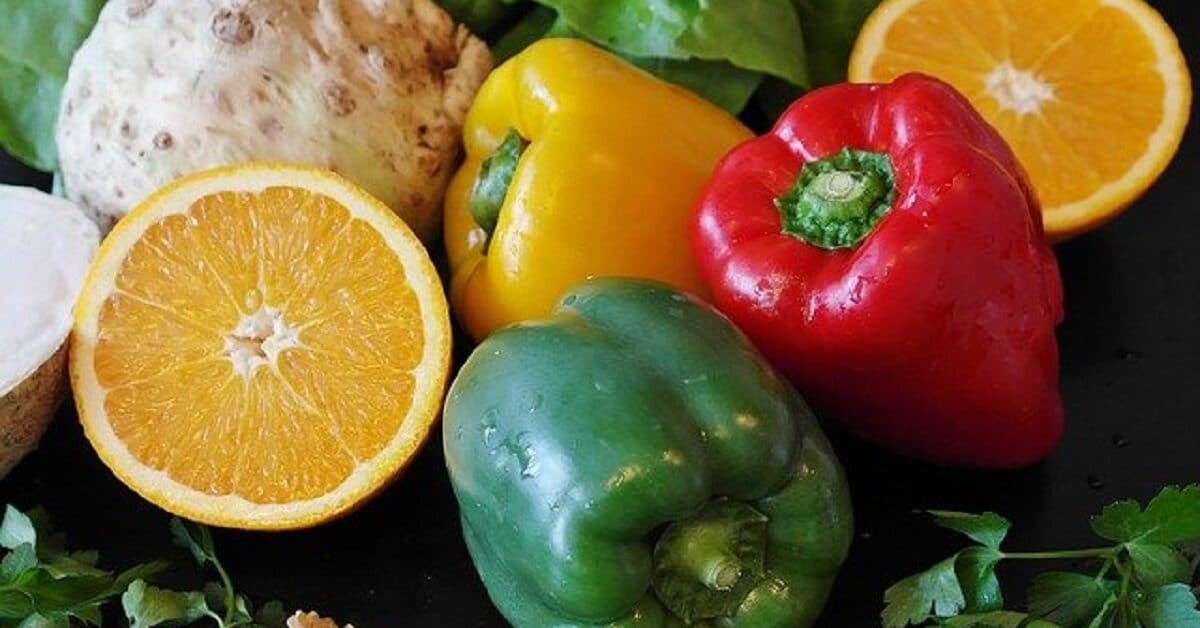
A short or long-term plan to control your blood pressure is most effective when implemented as part of a multipronged program combining compliance with doctor-prescribed medication with a healthier lifestyle.
Lifestyle change recommendations may include changes in dietary habits (such as the adoption of a DASH diet plan), weight management, exercise, stress management, and the use of supplements.
If you are trying to create a list of foods to include in your diet plan to lower your blood pressure, you may want to adopt DASH diet guidelines.
DASH is one of the most popular guidelines experts recommend for designing healthy eating plans to manage BP. DASH is an acronym for Dietary Approaches to Stop Hypertension. A DASH plan prescribes a diet low in saturated fats and sugars, but high in protein, fiber, potassium, calcium, and magnesium through increased consumption of fruits and vegetables, nut and seeds, legumes, whole grains, lean meats, and low-fat dairy.
Steinberg et al. noted that DASH is not a reduced-sodium diet, but variations of DASH that recommend reduced sodium intake (low salt intake) have been found to be effective for lowering blood pressure (Svetkey et al.).
21 foods that lower blood pressure
The DASH diet concept offers broad guidelines for decision-making on foods to include or exclude from a healthy eating plan to manage hypertension.
This article provides a list of healthful foods that lower blood pressure — fruits, vegetables, herbs, spices, teas, and herbal teas — you may include in your diet plan based on DASH guidelines. In a subsequent article, we shall explore other elements of a DASH diet plan, namely, nuts, seeds, cereal grains, and low-fat dairy products.
1. Oranges and lemons (fruits)
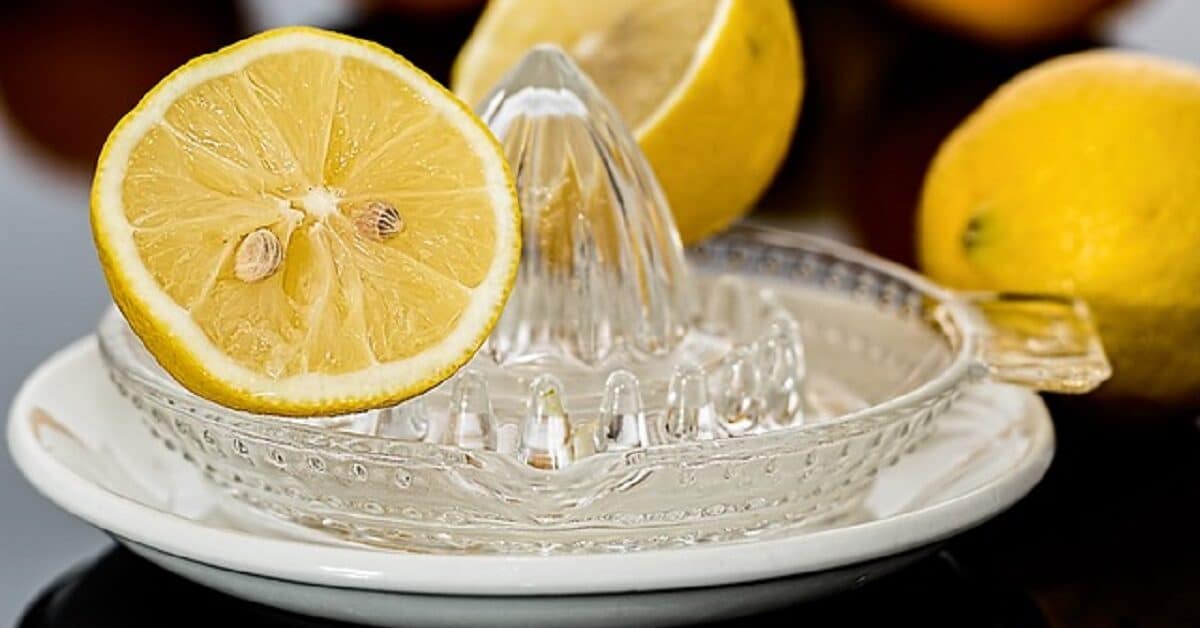
Kato et al. reported that intake of lemons combined with physical exercise helped to lower systolic blood pressure.
The ability of fruits (and vegetables) to lower blood pressure may be due to their high potassium and antioxidant flavonoid and polyphenol content (Feyh et al.). The authors reported that high serum potassium levels relative to sodium levels (sodium-potassium ratio) have been shown to have an inverse relationship with blood pressure (Perez et al.; Aaron et al.). The inverse relationship between potassium content and blood pressure explains why DASH diets low in sodium but high in potassium, magnesium, and calcium are effective for lowering blood pressure.
Oranges are a good source of potassium, magnesium, and calcium that help lower blood pressure. Oranges are also a good source of anti-inflammatory flavanones that studies have linked with a lowered risk of cardiovascular diseases.
Studies have shown that oranges have antihypertensive properties.
Asgary et al. reported that drinking commercial Citrus sinensis (sweet oranges) juice decreased diastolic BP by more than 5% and systolic BP by nearly 6% in 22 healthy patients aged 18-59.
2. Grapefruits
Díaz-Juárez et al. reported that grapefruits (Citrus paradisi) may also have antihypertensive properties besides being a rich source of vitamin C, pectin fiber, and antioxidants. The authors reported that grapefruits lowered systolic and diastolic BP in both normotensive and hypertensive human subjects. They concluded that consumption of grapefruit juice resulted in lower mean arterial blood pressure than orange juice.
Oboh and Ademosun reported that the free phenolic extracts of grapefruit had higher antioxidant activity than the bound phenolic extracts. The researchers concluded that the combined and synergistic action of the free and bound phenolic extracts may play a role in the medicinal properties of grapefruit.
The antihypertensive properties of grapefruits may be due to the α-glucosidase inhibiting the activity of their polyphenol content (Feyh et al.)
However, other studies have shown that grapefruit juice may interfere with the absorption of several medications, including blood pressure-lowering medications. So, if you are on doctor-prescribed medication, you need to consult your doctor before adding grapefruits to your diet.
3. Strawberries
Strawberries are rich in polyphenols (ellagitannins and ellagic acid) that may help control hypertension linked with high blood sugar.
The polyphenol content of strawberries may help control blood sugar and hypertension linked with high blood sugar (Pinto et al.)
Strawberries also contain phenolic compounds, such as tannins and anthocyanin flavonoids, that may have antioxidant, anti-inflammatory, lipid-lowering, blood pressure-lowering, and cardioprotective properties (Skrovankova et al.; Vendrame et al.)
Anthocyanins may also have vasodilatory properties. Vendrame et al. reported that anthocyanins have been shown to increase endothelial nitric oxide (NO) known to lower blood pressure through a vasodilatory effect.
The authors added that studies investigating the antihypertensive properties of strawberries may have yielded mixed results due to differences in dose, duration of the intervention, and interaction with other phytochemicals.
4. Tomatoes
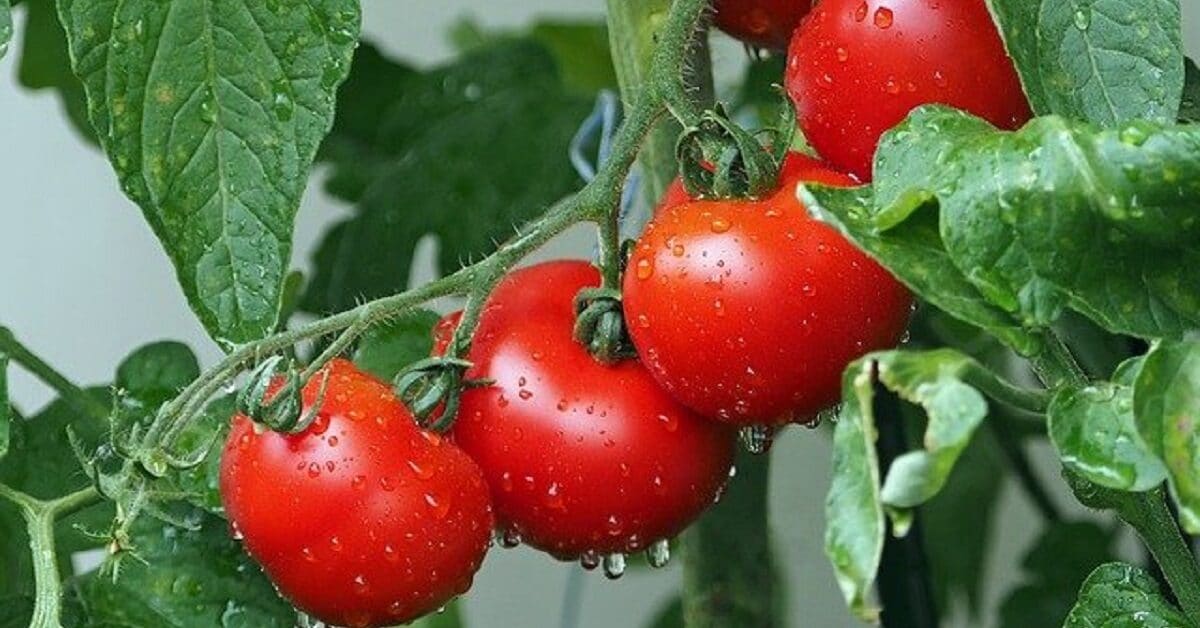
Tomatoes are fruits rich in the carotenoid pigment lycopene found in many red-colored fruits. Studies indicate that lycopene lowers blood pressure and reduces the risk of heart disease.
Mozos et al. reported that lycopene may protect against cardiovascular disease by supporting the healthy function of blood vessels. According to the authors, lycopene has antioxidant, anti-inflammatory, and antihypertensive properties. It has been shown to promote the health of vascular endothelial cells and prevent arteriosclerosis, peripheral vascular disease, and stroke.
It also has antiplatelet and anti-apoptotic (apoptosis: cell death) activity.
Tomato carotenoids, including lycopene, phytoene, and phytofluene have antioxidant properties (Wolak et al.). The researchers reported that the effect of lycopene-rich Tomato Nutrient Complex (TNC) on blood pressure in untreated hypertensive patients was dose-dependent. According to the authors, only TNC standardized for 15 or 30 mg of lycopene exhibited significant antihypertensive effect by lowering mean systolic BP.
Engelhard et al. also reported that treatment with tomato extract reduced blood pressure in hypertensive patients.
Lycopene is also found in watermelon, papaya, and guava.
5. Bananas
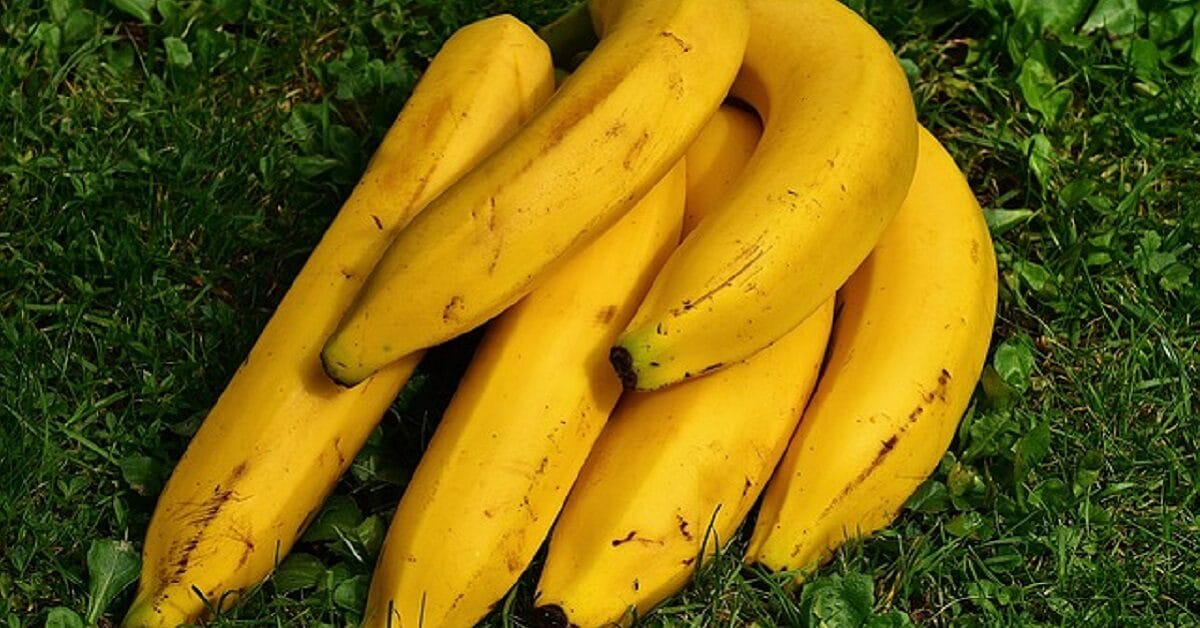
Consumption of bananas may reduce the risk of cardiovascular diseases by lowering blood pressure (Griep et al.). The authors reported that diastolic BP was inversely related to banana intake among East Asians.
They noted that bananas are rich in potassium and magnesium that have been shown to counter the blood pressure increasing effect of dietary sodium.
Bananas are also a rich source of fibers. Fibers are have been associated (Quagliani et al.) with a reduced risk of stroke, hypertension, and heart disease, CARE healthy living reported.
6. Kiwis
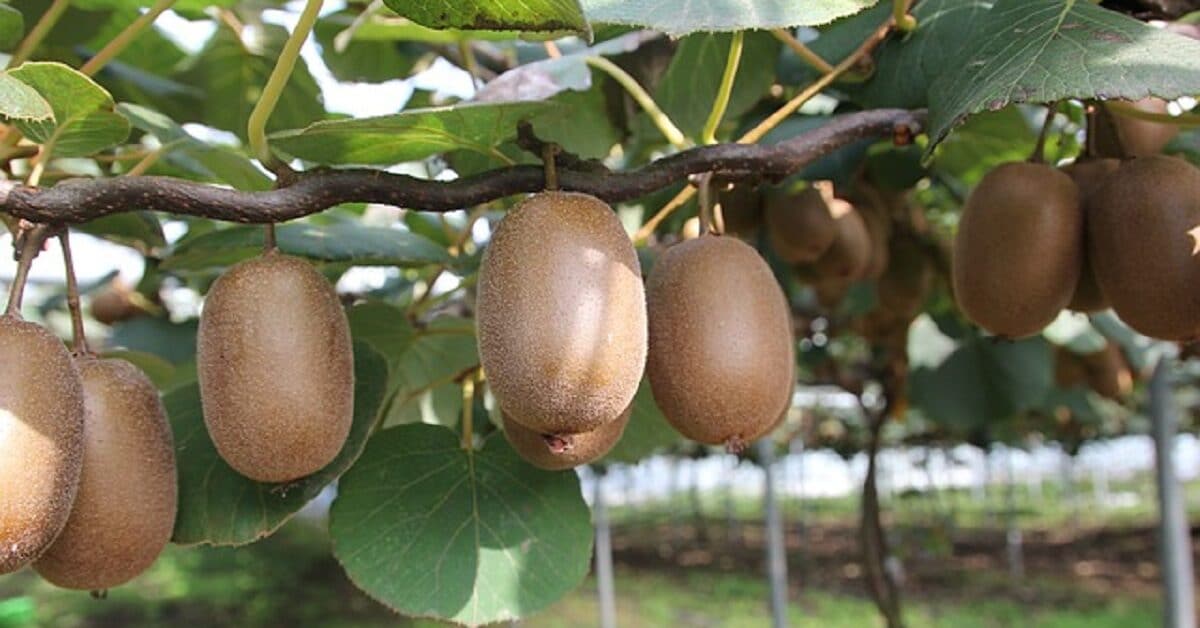
Studies suggest that kiwi, also known as kiwifruit (Actinidia deliciosa), has antihypertensive effects in people with elevated blood pressure.
Svendsen et al. reported that kiwis contain certain bioactive compounds that improve vascular endothelial function and lower blood pressure. The researchers reported that subjects with borderline and mildly elevated BPs who received kiwi supplementation for 8 weeks recorded a greater reduction in systolic and diastolic BP than another group on apple supplementation.
The authors concluded that kiwi was effective for lowering systolic and diastolic BP in subjects with moderately elevated BP. They suggested that the blood pressure-lowering effect of kiwi may be due to its ability to improve endothelial function.
In another study, Svendsen et al. concluded that kiwi intake may have beneficial health effects in male smokers by reducing blood pressure and improving platelet aggregation.
7. Watermelon
Watermelon supplementation improved aortic function in individuals with prehypertension (Figueroa et al.).
The authors reported that watermelon is rich in L-citrulline that reduces BP and improves arterial function in adults with high BP through conversion to L-arginine.
L-arginine, in turn, acts as a precursor for the synthesis of endothelial nitric oxide (NO) which regulates arterial blood pressure (BP) through its vasodilatory effect.
In a separate study, Figueroa et al. also concluded that watermelon extract supplementation reduced ankle blood pressure and brachial BP in obese middle-aged adults with prehypertension or stage 1 hypertension.
8. Pomegranates
Pomegranate juice is a rich source of phytochemicals and polyphenols. The antioxidant, anti-inflammatory, and hypolipidemic effects of the phytochemical and polyphenol content of pomegranates promote cardiovascular health (Asgary et al.)
Research indicates that angiotensin II plays a role in increasing blood pressure in diabetics. Pomegranate juice may help control high blood pressure in diabetics by inhibiting angiotensin-converting enzyme (ACE) (Feyh et al.; Stowe et al.)
Asgary et al. reported that pomegranate juice showed a significant antihypertensive effect in hypertensive subjects aged 39–68. Daily consumption of 150ml of natural pomegranate juice resulted in a 7% reduction in systolic BP and a 6% reduction in diastolic BP.
Daily consumption of pomegranate juice extract for 4 weeks reduced main arterial blood pressure and inhibited the blood pressure-increasing activity of angiotensin II in diabetic rats (Mohan et al.). The researchers concluded that the antihypertensive effects of pomegranate juice promoted cardiovascular health and may play a role in dietary intervention to manage hypertension.
9. Spinach (vegetables, roots, and tubers)
Diets rich in vegetables, such as spinach, have been shown to reduce the risk of cardiovascular events (Jovanovski et al.). The researchers noted that recent studies suggests that the high nitrate content of spinach may play a role in its cardiovascular protective activity.
According to the authors, short-term consumption of spinach relieved arterial stiffness, promoted vasodilation, improved central and peripheral blood pressures.
10. Beets, beet greens, and beet juice
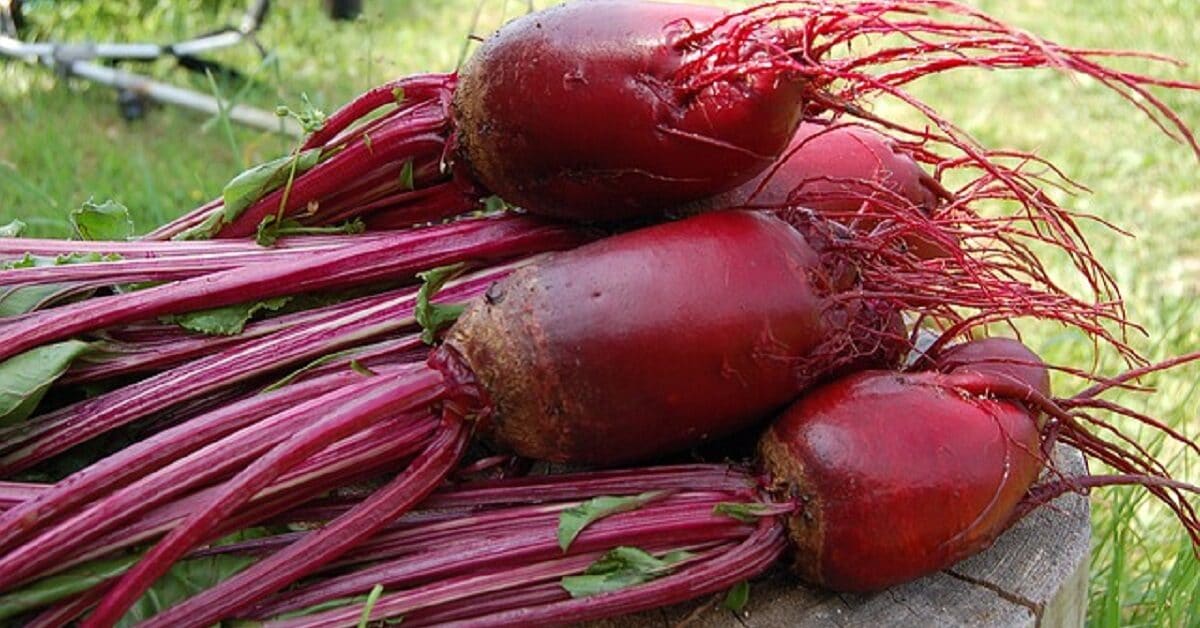
Beets reduce blood pressure (BP) and the risk of adverse cardiovascular events (Webb et al.). The researchers suggested that the high nitrate content of beets may act as a source of vasoprotective nitric oxide through bioactivation (the nitrate content of beets is converted to nitrite by bacterial anaerobes on the surface of the tongue, according to the researchers).
The authors reported a significant lowering of blood pressure in healthy volunteers only 3 hours after ingesting beetroot juice (beet juice) rich in dietary nitrate. They also found an association between lower BP and peak increases in plasma nitrite concentration derived from “enterosalivary conversion” of ingested nitrate content of beetroot juice.
According to Webb et al., dietary nitrate prevented endothelial dysfunction (endothelium: membrane that lines the inside of blood vessels). They concluded that high nitrate content accounted for the beneficial cardiovascular health effects of beets and other nitrate-rich vegetables
11. Celery
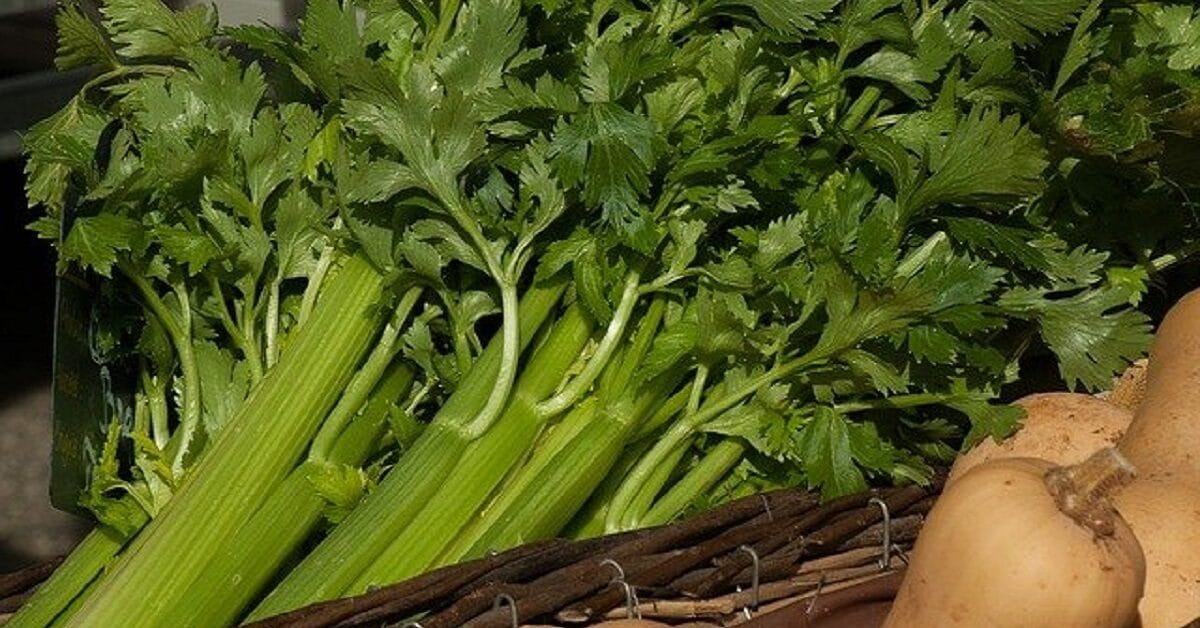
Moghadam et al. investigated the effect of celery (Apium graveolens) seed extracts on blood pressure and heart rates of normotensive rats and rats with pharmacologically induced hypertension.
They reported that supplementation with hexanic, methanolic, and aqueous-ethanolic extracts of celery seeds decreased BP but increased heart rates (HR) in hypertensive rats.
The researchers concluded that celery seed extracts have significant antihypertensive properties. They attributed the antihypertensive effects of the seed extract to its n-butylphthalide (NBP) content. They concluded that NBP may play a role as an antihypertensive agent in the management of high blood pressure.
Dianat et al. also investigated the effect of hydro-alcoholic celery leaf extract on systolic blood pressure (SBP), heart rate (HR), and lipid profile in rats with fructose-induced hypertension.
They reported that celery leaf extract reduced systolic BP, cholesterol, triglyceride, LDL ( low-density “bad” cholesterol), and VLDL ( very-low-density lipoprotein). VLDL has been shown to contribute to the development of arteriosclerosis in rats with fructose-induced hypertension.
Celery leaf extract had blood pressure and lipid-lowering effects and may play a role as an antihypertensive agent in the treatment of elevated SBP (Dianat et al.)
12. Amaranth
Amaranth storage proteins may have antihypertensive activity (Nardo et al.). According to the authors, amaranth is a rich source of peptides and protein hydrolysates with antihypertensive activity. They may play a role as an alternative to drugs for managing hypertension.
The authors noted that although studies conducted so far suggest that the BP-lowering activity of amaranth peptides was lower than that of drugs such as captopril, higher amounts may achieve comparable in vivo BP reduction.
They also suggested that because it was unlikely that antihypertensive peptides will replace conventional drugs for some time, the focus should be on developing new functional foods for the health nutrition market
Amaranth grain contains phytosterols, tocotrienols, and squalene compounds known to play a role in lowering cholesterol levels (Martirosyan et al.). Multiple studies show that feeding chickens with amaranth oil decreased blood cholesterol levels (Qureshi et al.; Berger et al.)
High cholesterol is an indicator of increased risk of heart attack and stroke. Lowering total cholesterol and LDL levels prevent cardiovascular disease.
According to Martirosyan et al., amaranth oil also reduced blood pressure and may serve as an effective alternative therapy in people with hypertension. The authors concluded that amaranth oil may have significant health benefits for people suffering from hypertension and cardiovascular disease.
13. Carrots
Carrots are root vegetables that also have antihypertensive activity.
Epidemiological data show that carrot consumption is associated with decreased risk of cardiometabolic diseases (Soleti et al.) The researchers investigated the metabolic and cardiovascular protective effects of feeding bolero carrots to mice on a high-fat diet and concluded that carrots decreased plasma triglyceride.
They found that bolero carrots grown under biotic stress conditions (BoBS) decreased weight gain and reduced levels of very-low-density lipoprotein (VLDL is involved in the development of atherosclerosis).
They also found that bolero carrots cultivated under standard (Bo) and biotic stress conditions (BoBs) decreased systolic, diastolic, mean blood pressure, improved cardiac output, and vascular health.
The researchers concluded that Bo and BoBS remedied metabolic and cardiovascular disorders in atherosclerosis-susceptible mice and thus may offer an alternative nutritional approach to drug therapy for preventing cardiovascular diseases.
Potter et al. also found that consumption of carrot juice increased total antioxidant status and improved cardiovascular risk markers (including systolic BP) in human subjects.
The researchers concluded that drinking carrot juice may protect against cardiovascular diseases.
14. Broccoli
Studies suggest that broccoli, a cruciferous vegetable, has antihypertensive properties and may help to lower blood pressure.
Consumption of broccoli (≥4servings/week) was associated with a decreased risk of hypertension (Borgi et al.)
Consumption of broccoli may help control blood pressure and promote blood vessel function by restoring endothelial function through regulation of nitric oxide (NO) availability (Clark et al.). Broccoli may protect against cardiovascular disease due to its high flavonoid antioxidant content.
Broccoli sprouts are also rich in glucosinolates that some studies have reported improved endothelial function in hypertensive rats (Christiansen et al.)
According to Connolly et al., glucosinolate phytochemicals are found almost exclusively in cruciferous vegetables, such as broccoli. They have anti-inflammatory and antioxidant effects. Studies also indicate that they promote cardiovascular health and lower the risk of atherosclerotic vascular disease (ASVD).
However, Christiansen et al. reported that daily consumption of 10g of dried broccoli sprouts for 4 weeks did not improve endothelial function in hypertensive humans.
Other cruciferous vegetables include cabbage, radish, cauliflower, turnips, and kale.
15. Garlic (herbs and spices)
Garlic is a vegetable widely used as a herb and a spice.
Studies have shown that garlic has antioxidant, antihypertensive, and cardio-protective properties. Ried et al. reported that the antihypertensive properties of garlic may be due to its allicin content.
Allicin is a sulfur-containing substance that inhibits the activity of the vasoconstrictor (blood vessel narrowing) angiotensin II and thus promotes vasodilation (relaxation of the walls of blood vessels reduces blood pressure).
Angiotensin II is a powerful vasoconstrictor that causes sodium and water retention by stimulating aldosterone secretion. Sodium and water retention increase blood pressure by increasing circulating fluid volume.
Garlic powder, oil, and extract significantly decreased systolic and diastolic BP in hypertensive patients (Ried et al.).
In another study, Ried et al. reported that supplementation with garlic extract containing 1.2 mg of S-allyl cysteine significantly reduced the blood pressure in hypertensive subjects.
Wang et al. also reported that garlic supplementation (powder and oil extract) in hypertensive patients significantly reduced systolic and diastolic BP.
Garlic used as a spice has the additional health benefit of reducing salt intake by improving the flavor of food and thus reducing the desire to add more salt (Feyh et al.).
16. Cinnamon
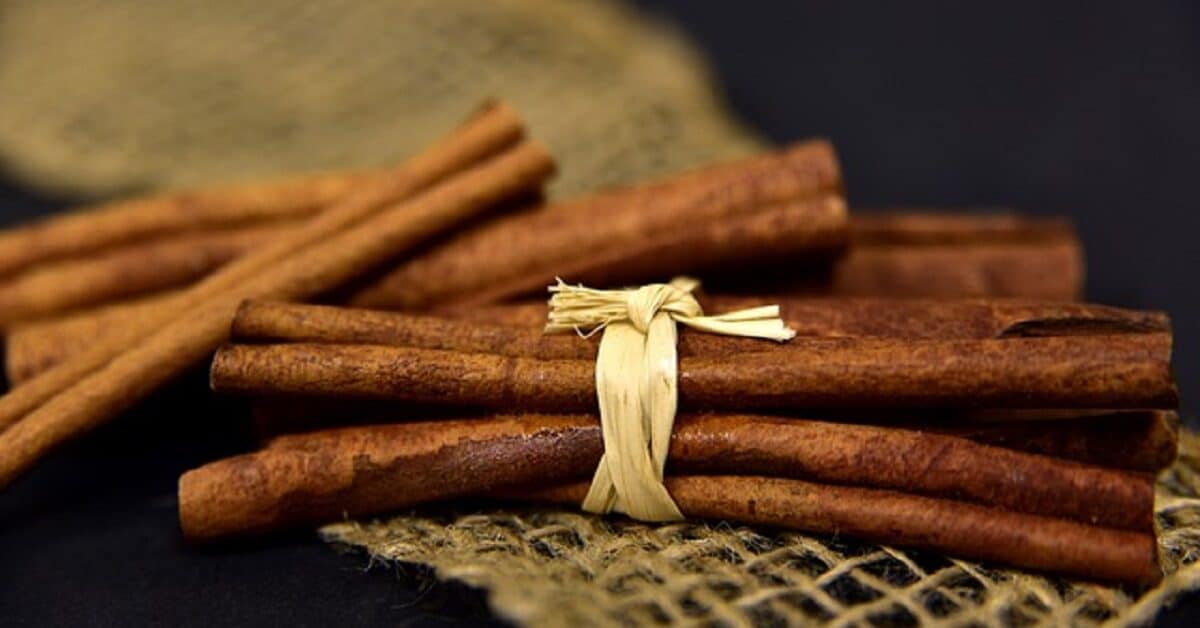
Cinnamon has been used for medicinal purposes in traditional medicine for centuries. Besides it’s ability to enhance the flavor and palatability of food, recent research suggests it lowers blood pressure
Multiple studies have shown that cinnamon extracts have antihypertensive and vasodilatory activity in rats.
Intravenous injection of various concentrations of an aqueous extract of Cinnamomum zeylanicum stem bark produced a sustained blood pressure reducing effect in normotensive and hypertensive rats (Nyadjeu et al.)
The authors concluded that the antihypertensive effect of cinnamon was due to vasodilatory activity induced by an increase in endothelial nitric oxide and activation of KATP (ATP-sensitive potassium) channels in the vascular smooth muscle of the rats.
In a follow-up study, Nyadjeu et al. reported that intravenous administration of cinnamon extract significantly reduced mean arterial blood pressure in rats with induced arterial hypertension. They concluded that the antihypertensive activity of cinnamon extract may be due to its ability to stimulate the production of endogenous nitrous oxide (NO) and regulate dyslipidemia (elevated total and LDL “bad” cholesterol levels).
In addition to its antihypertensive effect, cinnamon may also reduce blood sugar levels in diabetic patients by enhancing insulin sensitivity.
The blood sugar level-reducing activity of cinnamon is significant in the context of our interest in its antihypertensive properties because studies have shown an association between the ability of antioxidant substances to enhance insulin sensitivity and their ability to lower blood pressure (Feyh et al.; Salvetti et al.; Dal et al.).
17. Capsicum: Red, yellow, paprika peppers
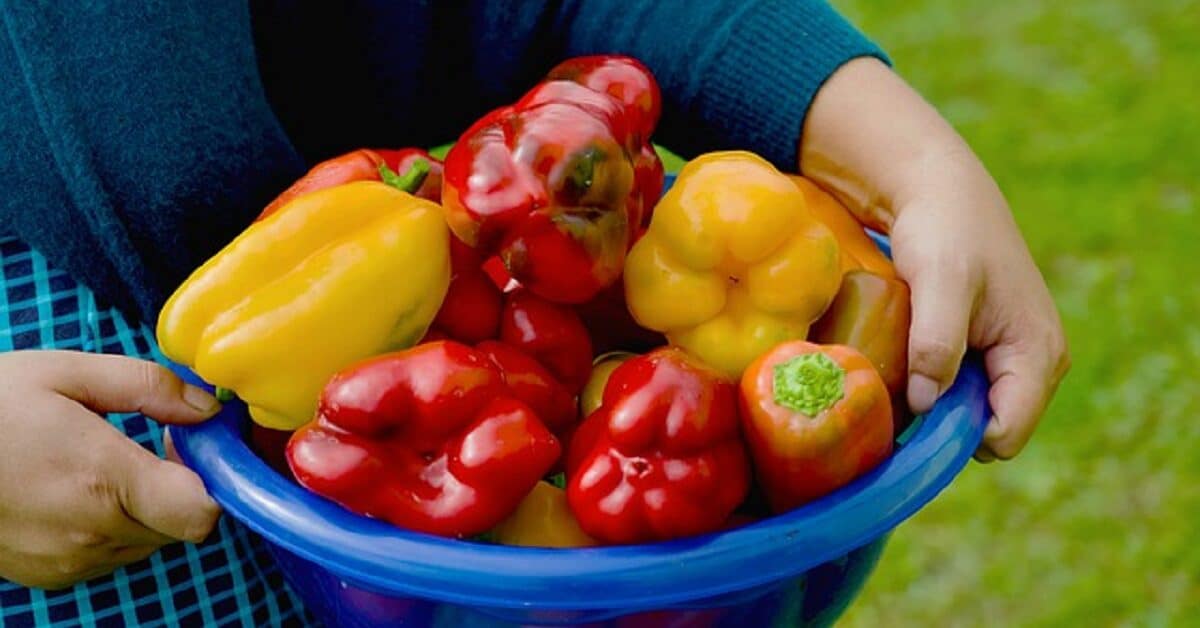
Red peppers, yellow peppers, paprika peppers, and other members of the genus Capsicum (such as bell peppers) contain capsaicin, a phenolic alkaloid known to have a significant blood pressure-lowering effect when consumed in moderate quantities (Feyh et al.).
The antihypertensive effect of capsaicin is reportedly due to its inhibitory effect on the activity of angiotensin-converting enzyme (ACE). Thus, researchers concluded that peppers may play a role in managing hypertension caused by ACE activity.
According to Ranilla et al., ACE inhibitory activity of herbs and spices correlated with total phenolic content. The researchers concluded that paprika and red peppers showed the highest ability to inhibit ACE. But Kwon et al. reported that yellow pepper extracts had even higher ACE inhibitory activity than red peppers.
Other studies found that the antihypertensive activity of capsaicin was related to the amount consumed. While the consumption of moderate amounts was shown to have antihypertensive effects, large quantities of capsaicin-rich peppers may induce hypertensive crisis (Patane et al.; Dutta et al.).
Patane et al. concluded that the hypertensive effect of large quantities of capsaicin-rich peppers may be due to the reduced synthesis and release of the capsaicin-sensitive vasodilator calcitonin gene-related peptide (CGRP) from cardiac C-fibers.
18. Black pepper
Black pepper (Piper nigrum; family Piperaceae) is one of the world’s most popular and widely-traded spices, and it has been shown to have antihypertensive properties.
The antihypertensive activity of black pepper is mediated by its high essential oils content. The essential oils of black pepper can inhibit ACE activity, according to Oboh et al.
Black pepper also contains piperine, an alkaloid responsible for it’s pungent and spicy flavor.
Studies have shown that piperine may lower blood pressure and help control blood sugar levels. It has cardioprotective and hepatoprotective effects in hypertensive rats on a high carb and high-fat diet.
Supplementation with piperine for 8 weeks restored normal systolic blood pressure in rats on a high-carb, high-fat diet (HCHF diet) (Diwan et al.). It also partially helped prevent blood pressure increase in rats with induced hypertension.
Piperine’s antihypertensive activity may be due to its ability to block calcium channels (Hlavackova et al.)
19. Turmeric
Research studies have shown that turmeric (Curcuma longa; ginger family, Zingiberaceae) may lower blood pressure and protect against heart failure (in rats) by preventing deterioration of systolic function and myocardial hypertrophy due to uncontrolled hypertension (Morimoto et al.).
The cardioprotective activity of turmeric is due to its curcumin content, a polyphenol compound responsible for its yellow color. Curcumin has antihypertensive properties and protects against degenerative changes in the aorta that may lead to loss of vessel elasticity (Hlavačková et al.).
Curcumin also helped control NG-Nitro-L-arginine-methyl ester (L-NAME)-induced blood pressure increase in rats.
Nakmareong et al. concluded that curcumin has antihypertensive properties and may also prevent vascular dysfunction due to its antioxidant properties.
20. Green tea (teas and herbal teas)
Green tea, made from uncured (unoxidized) leaves and buds of Camellia sinensis, is known for its numerous health benefits, including antihypertensive activity (Khalesi et al.; Peng et al.).
Green tea is rich in polyphenols known as catechins. One of the several catechins in green tea is epigallocatechin gallate (EGCG), known to lower blood pressure by promoting vasodilation (relaxation of the wall of blood vessels).
EGCG promotes vasodilation by increasing the production of nitric oxide in endothelial cells and lowering the production of the vasoconstrictor endothelin-1(Feyh et al.; Potenza et al.; Pullikotil et al.).
EGCG may also inhibit fluid retention and vasoconstriction by countering the activity of renin, an enzyme that prevents low blood pressure by promoting vasoconstriction (Li et al.). EGCG exerts anti-inflammatory activity by promoting the activity of heme oxygenase-1 (HO-1), another enzyme that helps protect vascular endothelial cells by countering the effects of stress-induced inflammatory responses (Pullikotil et al.).
A study found that regular consumption of green tea was associated with a stable blood pressure reading over time in nonsmoking subjects but not in smokers (Tong et al.) The researchers concluded that supplementation with green tea flavonoids could play a role in a diet plan to manage blood pressure.
Cabrera et al. reported that in addition to its antihypertensive properties, green tea may protect against cancer and help control BP in overweight and obese adults (Li et al.). Green tea may also have neuroprotective, antibacterial, and antiviral properties, and boost bone mineral density.
21. Black tea
Black tea, made from the cured leaves of Camellia sinensis, shares similar health benefits with green tea.
Black tea and green tea contain several polyphenolic catechins (flavonols), such as (+)-catechin (C), (+)-gallocatechin (GC), (-)-epicatechin (EC), (-)-epicatechin gallate (ECG), and (- )- epigallocatechin gallate (EGCG) (Cabrera et al., Daxiang Li et al.).
Black tea also has antihypertensive activity due to its catechin content. But the antihypertensive effects may not be as pronounced as green tea’s because it is less rich in bioactive catechins (Cabrera et al.; Liu et al.).
Greyling et al. concluded that although the antihypertensive effect of black tea is relatively small, it may have a significant impact at the population level.
Tea polyphenolic compounds protect against cardiovascular diseases. They exert vasodilatory effect by inducing smooth muscle relaxation through the promotion of endothelial nitric oxide synthase activity. They also reduce blood vessel inflammation, inhibit renin activity, and protect vessels against oxidative stress (Liu et al.).

